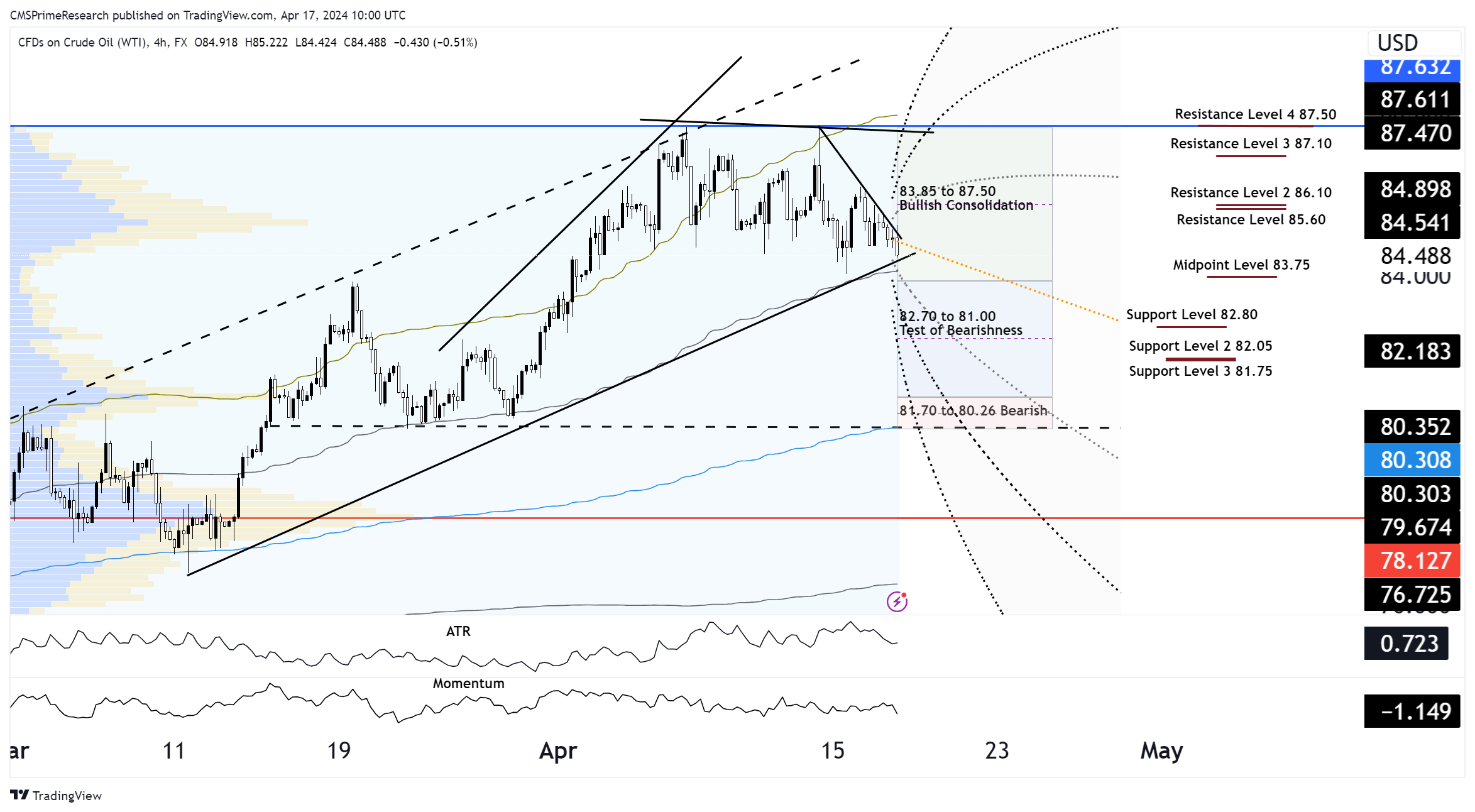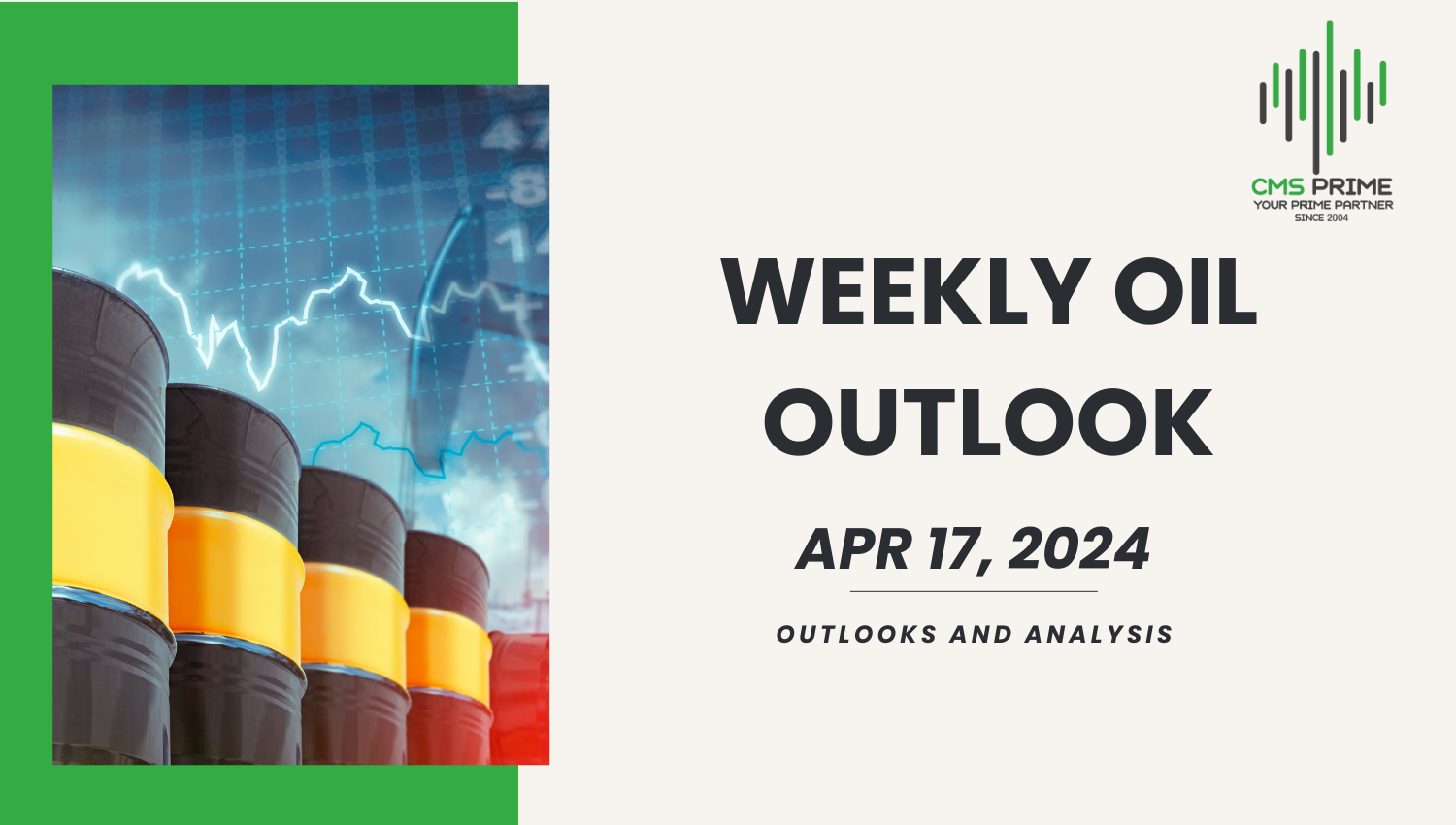
Current Factors Influencing Current Crude Oil Prices:
- On April 17th, oil prices declined for the third consecutive day, primarily due to the expectation of increased U.S. commercial inventories, while concerns about global demand grew amid weaker economic data from China and reduced prospects of interest rate cuts.
- This week, oil prices have softened as economic challenges have limited gains from geopolitical tensions
- In the morning trading session , Brent crude futures for June decreased by 19 cents, or 0.18%, to $89.78 per barrel, while U.S. crude futures for May dropped by 16 cents, or 0.19%, to $85.12 per barrel.
- John Evans, an oil broker at PVM, noted that oil prices are readjusting to lower levels after factoring in the war premium, alongside facing diminished hopes for interest rate cuts.
- Key figures from the U.S. Federal Reserve, including Chair Jerome Powell, refrained from indicating any specific timing for potential interest rate cuts, disappointing investors hoping for significant reductions in borrowing costs this year.
- In the UK, the slowdown in the inflation rate during March suggests that the Bank of England may delay its first rate cut.
- Meanwhile, inflation decelerated across the eurozone last month, reinforcing expectations of a rate cut by the European Central Bank in June.
- Concerns about a buildup in U.S. crude inventories and mixed economic data from China, coupled with technical indicators suggesting near-term overbought conditions, leading to profit-taking.
- Despite China’s stronger-than-expected economic growth in the first quarter, indicators indicate fragile domestic demand.
- A Reuters poll suggests that U.S. crude inventories increased by approximately 1.4 million barrels last week, with official data from the Energy Information Administration scheduled for release at 10:30 a.m. (1430 GMT) on Wednesday.
Technical and Fundamental Analysis

Chart Overview and Price Action
Trend and Structure: WTI is showing a declining trend over the past few days within a broader ascending channel, indicating a potential bullish fatigue or a normal pullback.
Support and Resistance:
- Resistance Levels: Immediate resistance is noted at $87.10 (Resistance Level 3) and $85.640 (current price level), with a major resistance at $87.50.
- Support Levels: The chart shows potential support at $82.80 and stronger support at $81.75.
Moving Averages: Price has deviated below short-term moving averages, suggesting a potential shift in momentum.
Fibonacci Retracements: The price is currently hovering near the 0.5 Fibonacci level at $83.92, indicating a possible inflection point.
Momentum Indicators: The ATR shows heightened volatility, while the momentum indicator is trending downwards, corroborating the recent price decline.
Fundamental Analysis:
Inventory Levels: The anticipated increase in U.S. inventories is a bearish development, potentially signaling an oversupply situation or waning demand.
Economic Data: Weak data from China and the lack of forthcoming rate cuts from the Federal Reserve contribute to the negative sentiment around global demand.
Geopolitical Factors: While geopolitical tensions typically support oil prices, the current market seems to be focusing more on global economic prospects and inventory levels.
Scenario Forecasts:
Bullish Scenario (30% Probability): Should geopolitical risks heighten or U.S. inventory data come in below expectations, a reversal of the recent downtrend could occur.
- Price Targets:
- First Target: $86.10 (price rebound)
- Second Target: $87.10 (above current resistance)
- Stretch Target: $87.50(next major resistance level)
- Price Targets:
Bearish Scenario (50% Probability): Increasing U.S. inventories and disappointing global economic data continue to push prices down.
- Price Targets:
- First Target: $82.80 (immediate support)
- Second Target: $81.75 (strong support level)
- Stretch Target: $80.30 (below support level 2)
- Price Targets:
Neutral Scenario (20% Probability): Market indecision leads to price consolidation within the current range as traders await more definitive directional cues.
- Price Targets: Oscillation between $85.78 and $82.57.
Overall Market Sentiment:
- Positive: 30% considering possible supply disruptions and recent price consolidations.
- Negative: 50% driven by the potential for increased inventories and weaker global economic data.
- Neutral: 20% given the market’s current wait-and-see approach to impending data releases.
Investors should closely monitor the EIA report and any changes in geopolitical tensions, as these will be pivotal in driving short-term market sentiment and establishing more concrete price direction.
Price analysis and Targets:($87-$81)
Considering the current situation in the oil market and the detailed analysis provided, we can outline a strategy that incorporates the critical support and resistance levels, along with the technical and fundamental drivers influencing the oil price. Given the current price of crude oil at $84.48 and a moderate Average True Range (ATR) of 0.725, indicating volatility, this strategy aims to capitalize on expected price movements over the next five trading days.
Strategy Components
1. Bullish Scenario Planning
- Entry Point: If the market shows signs of recovery, potentially driven by geopolitical factors or better-than-expected U.S. inventory data, consider entering a long position at a slight retracement to $84.00. This level provides a buffer and a better risk-to-reward ratio, anticipating a possible bounce as it is near the middle of the current trading range.
- Stop-Loss: Place a stop-loss at $82.80, aligning with the immediate support level. This placement limits downside risk while allowing some room for the usual volatility.
- Take-Profit Targets: Set the first take-profit target at $87.00, near the first resistance level identified. If the momentum remains strong, adjust or add a second take-profit at $88.00, near the upper range of the bullish scenario.
2. Bearish Scenario Strategy
- Entry Point: If prices start to decline, possibly due to increasing U.S. inventories or continuing negative economic signals, consider initiating a short position if the price breaks below $82.80. This break would confirm a bearish trend continuation.
- Stop-Loss: Position the stop-loss just above the nearest resistance at $84.00 to cap potential losses should the price unexpectedly reverse upwards.
- Take-Profit Targets: Place the first take-profit at $81.75, aligning with the next significant support level. For extended bearish momentum, set a stretch target at $80.30, just below the second level of strong support.
3. Neutral Strategy Consideration
- Range Trading: If the market remains undecided and oscillates within a specific range, adopt a range-trading strategy. Buy near the lower end of the anticipated range around $82.57 and sell near the upper end at $85.78.
- Stop-Loss and Take-Profit: Use tight stop-losses and take-profits just outside the boundaries of this range to manage the trades within a narrower margin.
Additional Considerations
- Monitoring: Keep a close watch on daily closing prices and intraday behavior around key levels ($82.80 and $87.00). Be ready to adjust strategies according to new information from inventory reports or significant geopolitical developments.
- Volatility Adjustments: Given the ATR of 0.725, ensure that the stop-loss and take-profit settings account for this degree of price movement to avoid being stopped out by normal market fluctuations.
- Economic Indicators: Stay updated on economic announcements that could affect global oil demand, especially from major economies like China and the U.S.
- Risk Management: Ensure that the risk on each trade does not exceed a set percentage of your trading capital to maintain a balanced and sustainable trading approach.
This strategy aims to be dynamic, adjusting to market signals and conditions as they develop, while carefully managing risks and potential returns based on the outlined technical levels and fundamental scenarios.
To know more about CMS Prime visit us at https://cmsprime.com
Disclaimer: This is not an Investment Advice. Investing and trading in currencies involve inherent risks. It’s essential to conduct thorough research and consider your risk tolerance before engaging in any financial activities.



